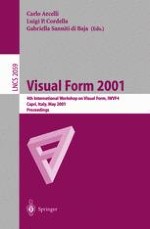2001 | Buch
Visual Form 2001
4th International Workshop on Visual Form, IWVF4 Capri, Italy, May 28–30, 2001 Proceedings
herausgegeben von: Carlo Arcelli, Luigi P. Cordella, Gabriella Sanniti di Baja
Verlag: Springer Berlin Heidelberg
Buchreihe : Lecture Notes in Computer Science
Enthalten in: Professional Book Archive
